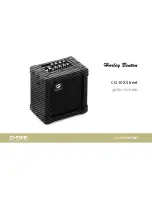
43
English
Details on Each Function Setup Item
Using Various Functions
Chapter
7
■
Scale
Certain genres of music are composed based on scales
other than equal temperament, which is the common
piano tuning scale. You can enjoy various scales with
this setting.
Setting
range
1
(equal
temperament)
One octave is divided into
twelve equal intervals.
Currently the most popular
piano tuning scale.
2
(pure temperament
major)
Based on natural overtones,
three major chords using these
scales produce a beautiful, pure
sound.
3
(pure temperament
minor)
4
(Pythagorean
temperament)
This scale, designed
by Pythagoras, a Greek
philosopher, is based on the
interval of a perfect 5th. The
3rd produces swells, but the
4th and 5th are beautiful and
suitable for some leads.
5
(meantone
temperament)
This scale is an improvement
of the Pythagorean in that
the swell of the 3rd has been
eliminated. The scale became
popular during the late 16th
century through the late 18th
century.
6
(Werckmeister
temperament)
These scales combine
meantone temperament and
Pythagorean temperament in
different ways. With these
scales, modulation changes
the impression and feel of the
songs. They were often used in
the era of Bach and Beethoven.
They are often used today to
reproduce the music of that era
on harpsichords.
7
(Kirnberger
temperament)
Default setting
1 (equal temperament)
Note
This setting does not revert to its default setting when you turn
the unit off.
■
Base Note
You need to specify the root when you select a scale
other than equal temperament in the Scale setting.
Setting range
C, C#, D, E , E, F, F#, G,
A , A, B , B
Default setting
C
Note
• This item does not appear when 1 (equal temperament) is
selected in “F4.1 Scale.”
• Upper bar indicates the sharp note, and lower bar indicates
the flat note.
(C
#
)
(E )
• This setting does not revert to its default setting when you
turn the unit off.
■
Pitch Curve
The pitch of an acoustic piano has a “stretched curve”
characteristic. That is, the high notes are higher,
and the low notes lower, than they actually are. You
can set the pitch curve of the digital piano to match
the acoustic piano. This is useful when you play the
acoustic piano while overlaying the voice of the digital
piano.
Setting
range
UP
Pitch curve of an upright piano
GP
Pitch curve of a small grand
piano
CF
Pitch curve of a large grand
piano
Default setting
CF
Note
• This setting is fixed to “CF” when you connect the
headphones.
• This setting does not revert to its default setting when you
turn the unit off.
















































